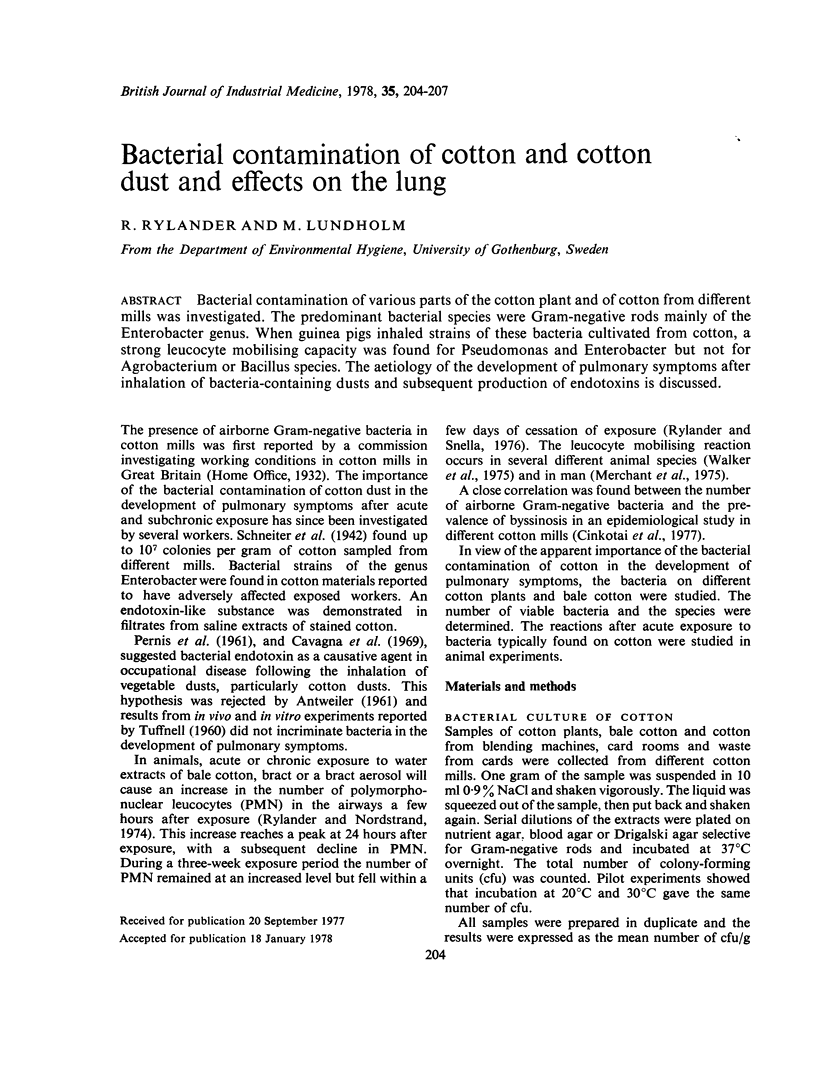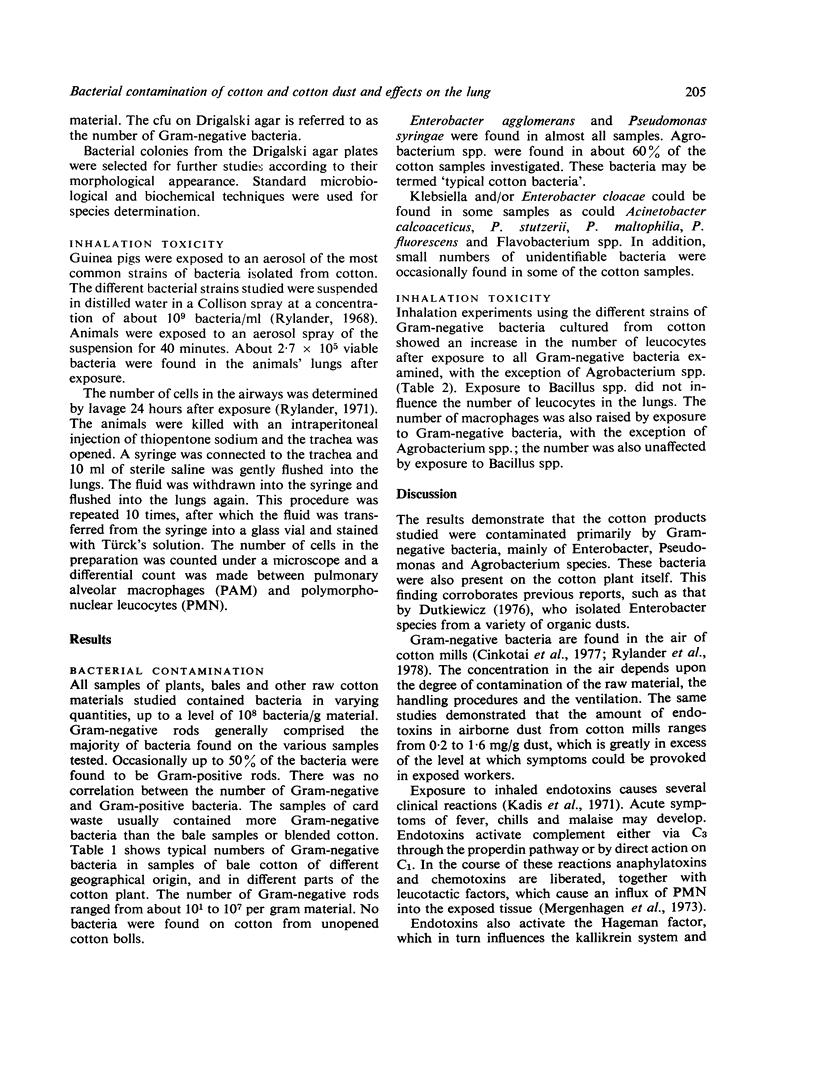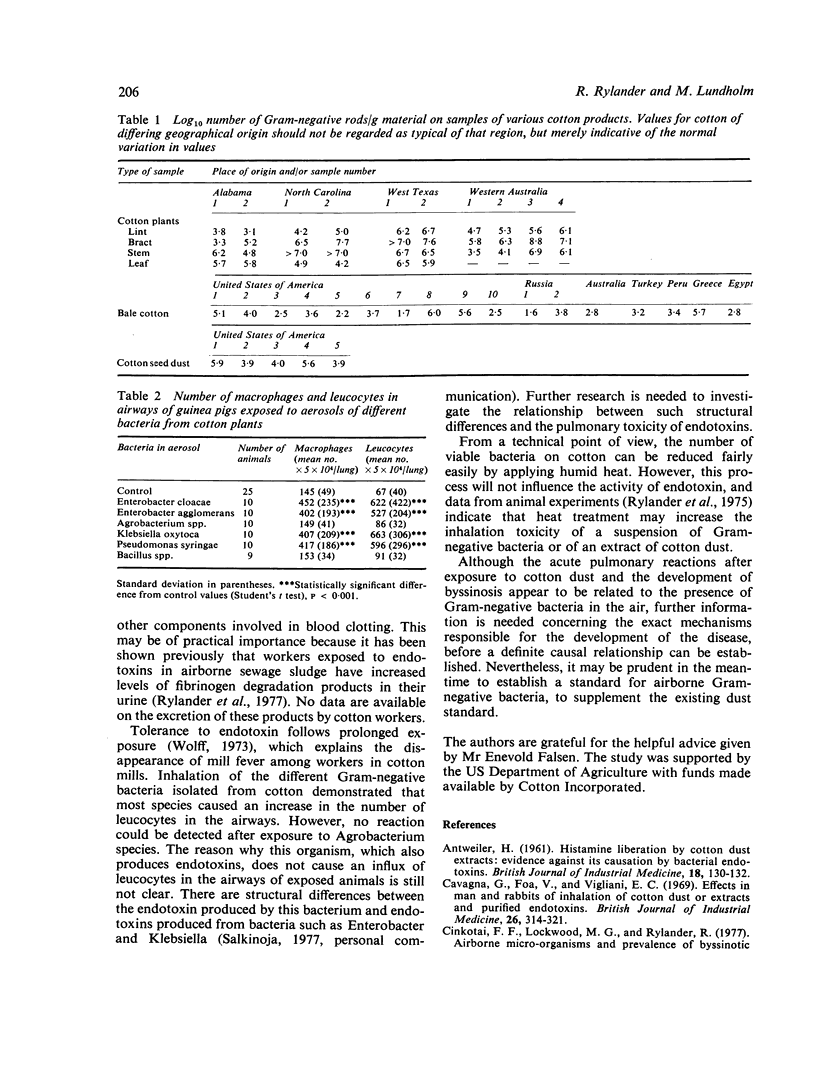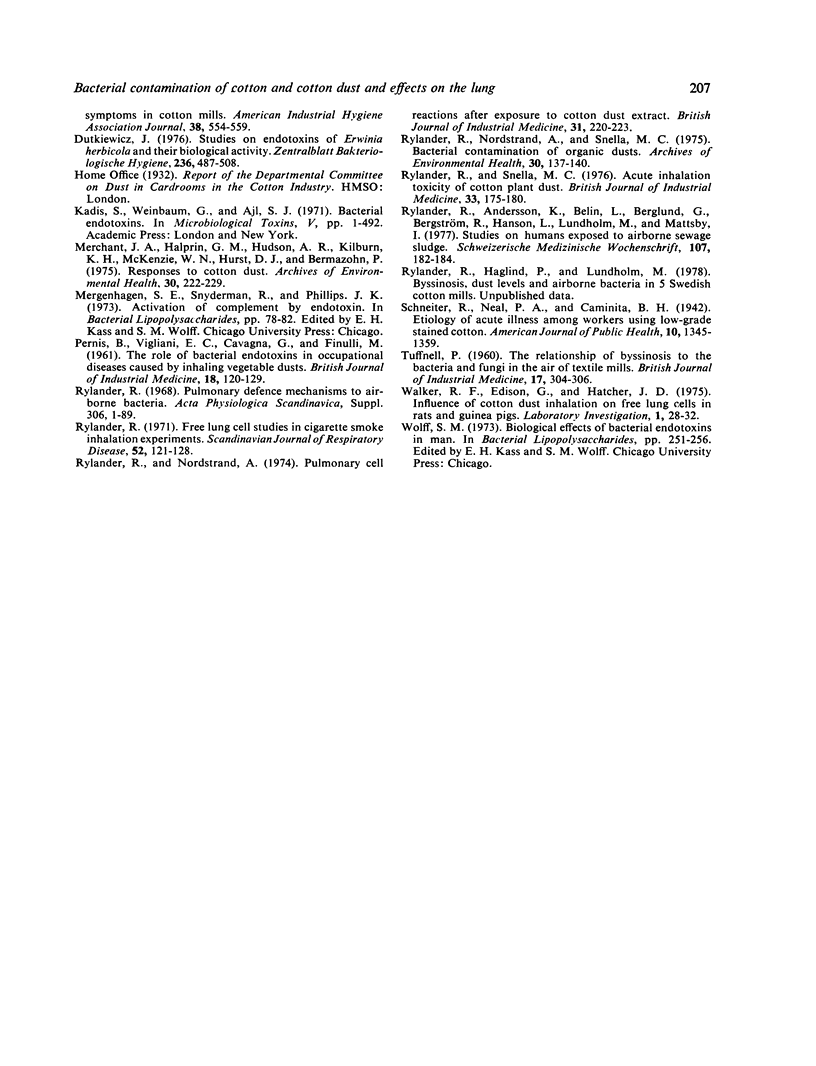Abstract
Bacterial contamination of various parts of the cotton plant and of cotton from different mills was investigated. The predominant bacterial species were Gram-negative rods mainly of the Enterobacter genus. When guinea pigs inhaled strains of these bacteria cultivated from cotton, a strong leucocyte mobilising capacity was found for Pseudomonas and Enterobacter but not for Agrobacterium or Bacillus species. The aetiology of the development of pulmonary symptoms after inhalation of bacteria-containing dusts and subsequent production of endotoxins is discussed.
Full text
PDF



Selected References
These references are in PubMed. This may not be the complete list of references from this article.
- ANTWEILER H. Histamine liberation by cotton dust extracts: evidence against its causation by bacterial endotoxins. Br J Ind Med. 1961 Apr;18:130–132. doi: 10.1136/oem.18.2.130. [DOI] [PMC free article] [PubMed] [Google Scholar]
- Cavagna G., Foà V., Vigliani E. C. Effects in man and rabbits of inhalation of cotton dust or extracts and purified endotoxins. Br J Ind Med. 1969 Oct;26(4):314–321. doi: 10.1136/oem.26.4.314. [DOI] [PMC free article] [PubMed] [Google Scholar]
- Cinkotai F. F., Lockwood M. G., Rylander R. Airborne micro-organisms and prevalence of byssinotic symptoms in cotton mills. Am Ind Hyg Assoc J. 1977 Oct;38(10):554–559. doi: 10.1080/0002889778507669. [DOI] [PubMed] [Google Scholar]
- Dutkiewicz J. Studies on endotoxin of Erwinia herbicola and their biological activity. Zentralbl Bakteriol Orig A. 1976 Dec;236(4):487–508. [PubMed] [Google Scholar]
- Merchant J. A., Halprin G. M., Hudson A. R., Kilburn K. H., McKenzie W. N., Hurst D. J., Bermazohn P. Responses to cotton dust. Arch Environ Health. 1975 May;30(5):222–229. doi: 10.1080/00039896.1975.10666685. [DOI] [PubMed] [Google Scholar]
- PERNIS B., VIGLIANI E. C., CAVAGNA C., FINULLI M. The role of bacterial endotoxins in occupational diseases caused by inhaling vegetable dusts. Br J Ind Med. 1961 Apr;18:120–129. doi: 10.1136/oem.18.2.120. [DOI] [PMC free article] [PubMed] [Google Scholar]
- Rylander R., Andersson K., Belin L., Berglund G., Bergström R., Hanson L., Lundholm M., Mattsby I. Studies on humans exposed to airborne sewage sludge. Schweiz Med Wochenschr. 1977 Feb 12;107(6):182–184. [PubMed] [Google Scholar]
- Rylander R. Free lung cell studies in cigarette smoke inhalation experiments. Scand J Respir Dis. 1971;52(2):121–128. [PubMed] [Google Scholar]
- Rylander R., Nordstrand A. Pulmonary cell reactions after exposure to cotton dust extract. Br J Ind Med. 1974 Jul;31(3):220–223. doi: 10.1136/oem.31.3.220. [DOI] [PMC free article] [PubMed] [Google Scholar]
- Rylander R., Nordstrand A., Snella M. C. Bacterial contamination of organic dusts: effects on pulmonary cell reactions. Arch Environ Health. 1975 Mar;30(3):137–140. doi: 10.1080/00039896.1975.10666662. [DOI] [PubMed] [Google Scholar]
- Rylander R. Pulmonary defence mechanisms to airborne bacteria. Acta Physiol Scand Suppl. 1968;306:1–89. [PubMed] [Google Scholar]
- Rylander R., Snella M. C. Acute inhalation toxicity of cotton plant dusts. Br J Ind Med. 1976 Aug;33(3):175–180. doi: 10.1136/oem.33.3.175. [DOI] [PMC free article] [PubMed] [Google Scholar]
- Schneiter R., Neal P. A., Caminita B. H. Etiology of Acute Illness Among Workers Using Low-grade Stained Cotton. Am J Public Health Nations Health. 1942 Dec;32(12):1345–1359. doi: 10.2105/ajph.32.12.1345. [DOI] [PMC free article] [PubMed] [Google Scholar]
- TUFFNELL P. The relationship of byssinosis to the bacteria and fungi in the air of textile mills. Br J Ind Med. 1960 Oct;17:304–306. doi: 10.1136/oem.17.4.304. [DOI] [PMC free article] [PubMed] [Google Scholar]
- Walker R. F., Eidson G., Hatcher J. D. Influence of cotton dust inhalation on free lung cells in rats and guinea pigs. Lab Invest. 1975 Jul;33(1):28–32. [PubMed] [Google Scholar]


